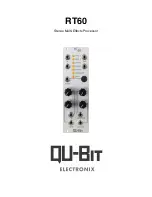
Greenlee Textron / Subsidiary of Textron Inc.
7
4455 Boeing Dr., Rockford, IL 61109-2988 815/397-7070
Bus Bar Punch System
3.
Use the hydraulic pump to advance the ram.
Note: Refer to the manual supplied with the pump.
4.
Release the hydraulic pressure. Move the bus bar
to the next punching position. Repeat steps 2- 4.
TO SET X-Y PATTERN:
•
Locate shoulder screw on underside of table
position screw in either slot A or B
TABLE SCALE (-100 mm thru 100 mm): Indicates distance
from punch center
•
BACK STOP SCALE (0 thru 100 mm): Indicates distance
from end of work piece to punch center
•
Place pin in either slot 1, 2, 3, or 4
DECAL NO. 503 9710.9 REV 1
PUNCH CENTER
BACK STOP SCALE
SLOT 1
SLOT 2
SLOT 3
SLOT 4
PIN
SLOT A
SHOULDER SCREW
SLOT B
TABLE
SCALE
A
B
C
Y
X
"X" DIRECTION
"Y" DIRECTION
PIN
POSITION
Slot 1
Slot 2
Slot 3
Slot 4
DIM
"A"
17 mm
(.67")
30 mm
(1.18")
25 mm
(.98")
20 mm
(.74")
DIM
"B"
26 mm
(1.02")
60 mm
(2.36")
50 mm
(1.97")
40 mm
(1.57")
SHOULDER
SCREW
POSITION
Slot A
Slot B
Slot A
Slot B
Slot A
Slot B
Slot A
Slot B
DIM
"C"
26 mm (1.02")
40 mm (1.57")
26 mm (1.02")
40 mm (1.57")
26 mm (1.02")
40 mm (1.57")
26 mm (1.02")
40 mm (1.57")
Figure 5 — Hole Patterns for X-Y Table
Operation
Punching Bus Bar
Figure 4
Centering Guide
0-120 mm
Alignment Guide
80-220 mm
Reads distance from
punch center
Back Stop Scale
0-12 cm
Reads distance from
punch center at rear edge.
Figure 3
Pinch points. Do not remove
guards. Keep hands away from
moving parts.
Use the Die Alignment procedure frequently.
Through normal use of the bus bar punch, the die
may become out of alignment. Using the bus bar
punch with the die misaligned will produce burrs
on the bus bar and may eventually damage the
punch and the die.
Failure to observe this precaution could result in
damage to the tool.
1.
Insert the bus par into the bus bar punch.
2.
Use the alignment table or the X-Y table (optional)
to set the bus bar in the appropriate location.
Note: The scale on the back stop, alignment guide,
and centering guide measure the distance to the
center of the punch. If using the alignment table,
see Figures 3 and 4. If using the X-Y table, see
Figures 4 and 5: Hole Patterns for X-Y Table.






































